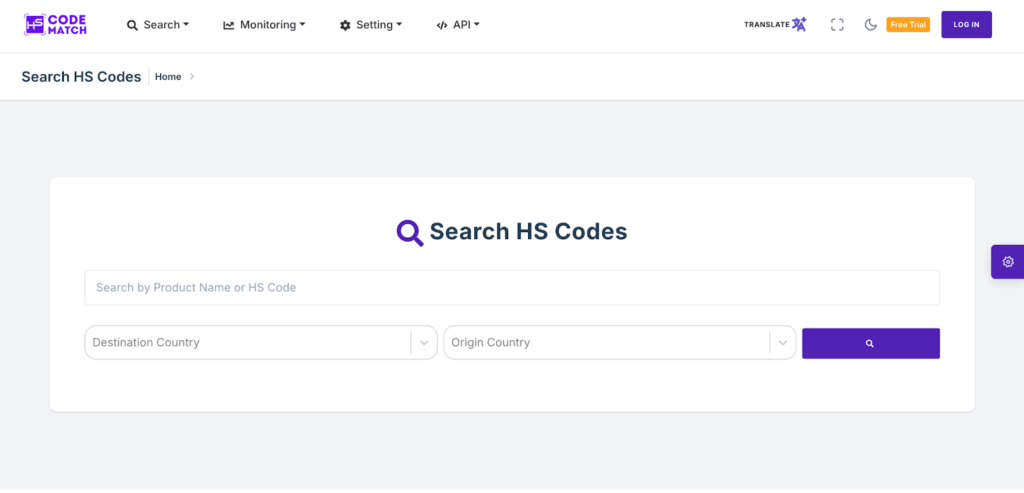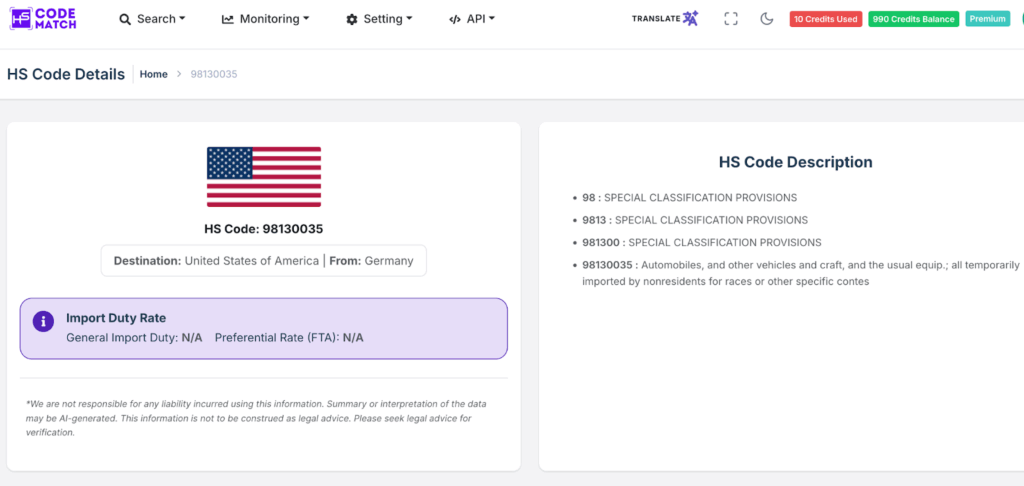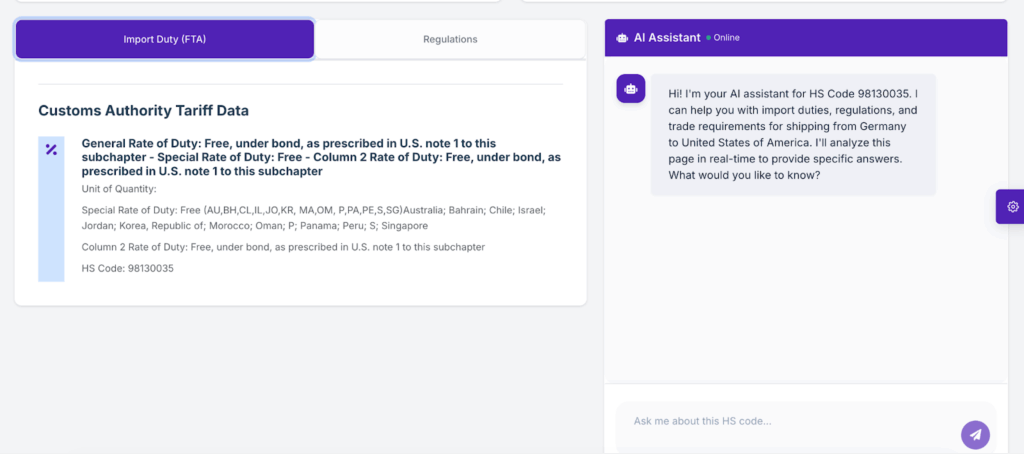What is a commodity code for export and import?

A commodity code is a crucial element in the export and import process. The commodity code plays a significant role in the identification of a product and ensuring that the product can pass customs smoothly. Therefore, parties in the export and import business should include the commodity code in their products before sending them to other countries.
However, a commodity code may sound unfamiliar to some people who are never involved in or are beginners in international business. In order to know what is a commodity code?, this article will explain more about the commodity code and its real function, and how the commodity code is important in international trade. It also helps you, especially those who are in the import and export business, to understand how to find the actual commodity code of a product.
What is a commodity code?
A commodity code is a special identification number to classify goods or products based on their characteristics in order to facilitate international trade. A commodity code is quite similar to the HS (Harmonized System) code, which is based on international standardization from the World Trade Organization (WTO). However, these two codes are different from each other. The HS code consists only of the first six-digit commodity code, and a commodity code commonly consists of 8 to 10-digit numbers from a combination of the HS code and additional unique numbers.
The terms of the commodity code are mostly used in the United Kingdom (UK) and the European Union (EU). On the other hand, the terms of the HS code are used internationally. The commodity code has a function to make the goods or products be identified easily by the customs agency in the destination country for determining the possible duties, taxes, restrictions, quotas, or other policies based on the country of origin.
Why are commodity codes important for export and import?
After identifying what is a commodity code?, we can understand how important the commodity code is and how it cannot be ignored for the parties involved in the export and import process. These are the reasons why the commodity codes are important in the international trade process.
- The commodity code has a role as an identifier of a product or goods from a specific country. Therefore, the inclusion of the commodity code is a requirement in order to identify the customs duty and value-added tax (VAT) in the destination country based on the country of origin. This will make the goods run smoothly through the customs process and avoid any disputes with the customs agency.
- The inclusion of the commodity code means that the products or goods already comply with the law in the international trade process. The incorrect determination or missclassification of the commodity code will have a huge impact because it will result in sanctions, such as fines, seizure of goods, or customs delay etc.
- The commodity code is also used for the claim of free trade agreements (FTA) between two or multiple countries. The inclusion of the commodity code will give you access to identity whether the goods are eligible for the reduction of certain duties.
- The commodity code plays a significant role for the government in order to track the goods or products that move in and out of its country. The export and import data will be recorded by the country’s statistics agency, and it will provide an accurate analysis for the economy and international trade policy.
Which businesses need to use the commodity code for their activities?
After we know what is a commodity code?, we can see that all of the businesses that are involved in the process of sending products or goods from one country to another need this code. However, as businesses, they need to identify the commodity code correctly in order to alleviate the harmful loss. These are the businesses that need to use the commodity code for their activities.
1. Freight Forwarders and Customs Brokers
Freight forwarders are an intermediary party involved in the supply chain of international trade. The freight forwarders provide the service to the exporter or importer in the shipping process, from managing the preparation of goods for ready to transfer, ensuring that the goods are in the ideal condition during the shipping, until the goods arrive in the destination country.
Slightly different from the freight forwarders, the customs brokers have a role as an intermediary party in international trade which specifically in assisting with the customs procedure in a specific country. This party will help and guarantee that the goods from the exporter or importer goes through the customs procedure smoothly.
However, some companies provide the service of freight forwarding and customs brokerage at the same time to guarantee that the products comply with the customs regulations in a certain country. As we know that the freight forwarders and customs brokers have to deal with and should understand what is a commodity code.
2. E-commerce Businesses
The e-commerce businesses that sell the products internationally are required to identify what is the commodity code of their product before the shipping process. They need to give the details of the products and verify that the products match the HS code or commodity code based on the country of origin and destination. This will easily help the shipping companies to identify the products based on their classifications.
3. Retailers and Wholesalers
The retailers or wholesalers who are conducting the process of importing or exporting goods from or to other countries need to identify what is a commodity code of their goods. This code will be used for customs documentation and compliance with the law in the country of origin and the destination country. The wholesalers should understand the latest policy and quota, or restriction because they are more likely to export or import the bulk products.
4. Manufacturers and Suppliers
Manufacturers and suppliers are the two parties that play complementary roles in the supply chain. The suppliers need the manufacturers to sell their products, and the manufacturers need the suppliers to supply the raw materials before the assembly or production process. The manufacturers and suppliers who export or import their products to other countries need to know what is a commodity code of their products to comply with the law and deliver accurate information about the products based on the policy in the country of origin and the destination country.
How to find a commodity code using HS Code Match?
After understanding what is a commodity code?, we need to know how to find a commodity code or HS code based on the specific products. However, finding a commodity code or HS code is not an easy thing to do. This process sometimes needs thoroughness to find the right commodity code based on the classification of products on the government websites of the destination countries. No need to worry, Jureem HS Code Match is answering the hardship in order to find the accurate commodity code or HS code based on the specific country of origin and the destination. These are the steps for finding the commodity code or HS code with HS Code Match.
- Set the goods name and the countries
In order to find what is the commodity code of a product is very easy; we only need to open the HS Code Match website. You simply fill in the product name and destination and origin country, then click the search symbol. This process is similar to using a search engine.

- Check the best result and the preference on the HS Code Match
After setting the product name and countries, the HS Code Match will show what is the most accurate commodity code or HS code for you. You can choose the commodity code based on your preference, and obviously, based on your detailed product.

- Check the regulation and duty
Then, you can check the details of the commodity code or HS code that has been chosen on the HS code details page. This page gives the HS code description, which is very useful for those who need the identify the classification of the product. On the other hand, this page also provides the regulations and the documents from the government for a specific country.

- Use the AI Assistant to check the specific part of the regulation
Not only identify what a commodity code or HS code is based on your products, but HS Code Match also provides an AI Assistant to help you find the specific part of the regulation or HS code that you want to know more about or need to be explained. This feature is easy to use; you only need to ask everything that you want to know about the regulation that you are looking for, and the AI Assistant will give you an answer.

After looking at the step-by-step instructions above, you can see how easy to find the right commodity code or HS code using HS Code Match. The information on HS Code Match is accurate because it is based on the latest government regulations that were published in the specific documents. Therefore, you do not need to find the document one by one related to the latest regulations. You can also find this information on the website of the government of the specific countries, but once again, it takes time and a meticulous process.
Conclusion:
What is a commodity code? It is quite simple because this code is basically an additional sequence of the HS code, which is mostly used in the UK and the EU. This code is required by the customs agencies to identify parties who are involved in the export and import business. Therefore, businesses in international trade should know how to find a commodity code and ensure that the code is correct because a mistaken code will have huge consequences, such as fines, seizure of products, customs delay, which will obviously huge impact on the business.
Frequently Asked Questions:
1. Why should we know what is a commodity code?
Because the commodity code is a crucial part of the export and import process, as an identification of the products. This code will help the customs authority to identify the duty, taxes, and exemptions of the duty or quota based on the free trade agreement between the origin and destination countries. Thus, every product that needs to cross an international border should include the commodity code or HS code in it.
2. Where can we find what is a commodity code description?
We can find the commodity code description on the government websites. However, it still takes time, and it will be a mundane process because we need to ensure the code. The easiest way to find the commodity code description is by using the HS Code Match. This platform is easy to use and provides many features to help you identify the commodity code based on your products.
3. What is the difference between a commodity code and an HS code?
The commodity code and HS code are quite similar, but these two codes are still considered as different. HS code is the first 6-digit code number at the beginning of the commodity code, which is recognized internationally. Therefore, the commodity code can be called the full code numbers of the HS code in a specific country.
4. What is a commodity code structure?
The commodity code structure consists of a 6-digit code, which can be called the HS code. Meanwhile, the commodity code is the full code with additional code (8-10 digits). This extra code number has a function to classify it into the tariff, taxes, quota, restrictions, exemptions, or other purposes based on the latest government regulation.
5. How many numbers are in a commodity code?
The commodity code mostly consists of 8 to 10-digit code numbers. However, some countries use 11-digit code numbers to identify the customs tariff or regional trade agreements. The example of a country that uses 11-digit numbers includes Germany, Taiwan, and the United Arab Emirates (UAE), etc.


 Oct 24,2025
Oct 24,2025  By admin
By admin 


